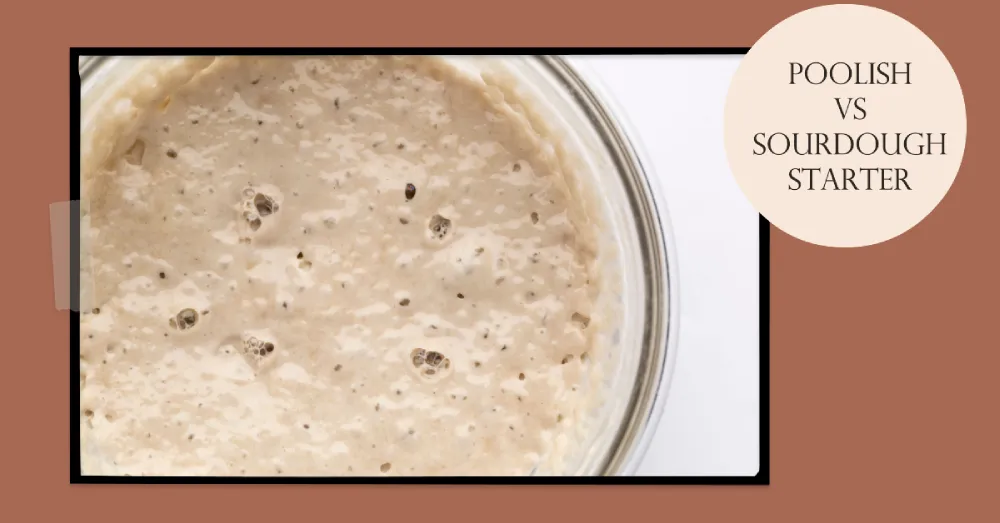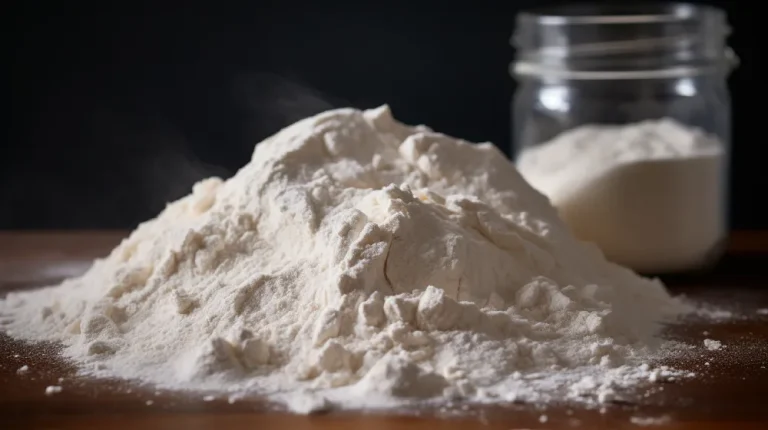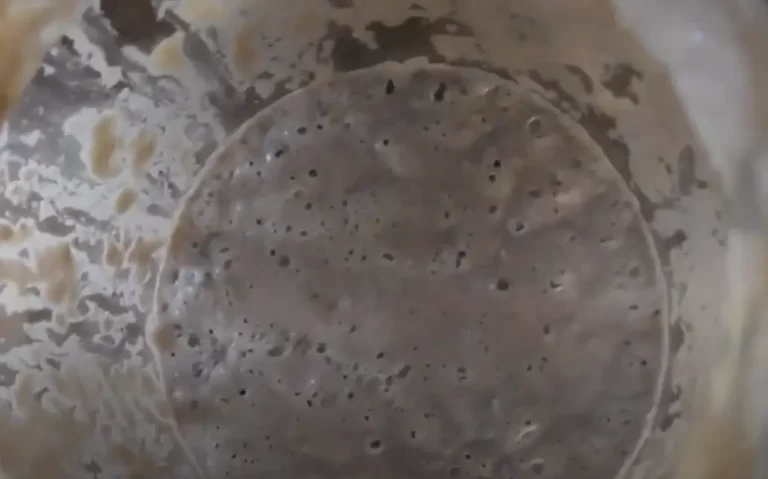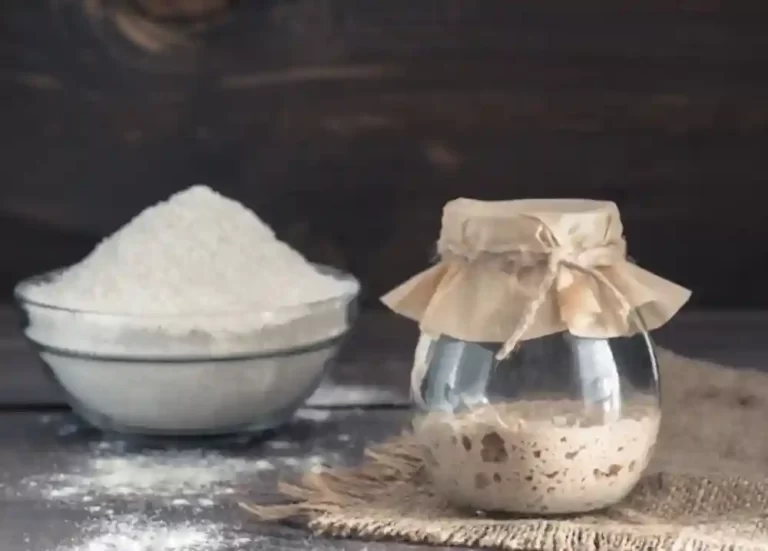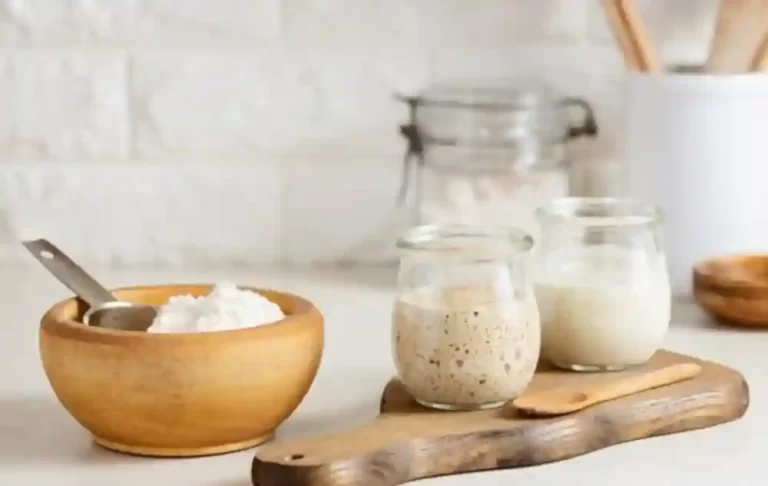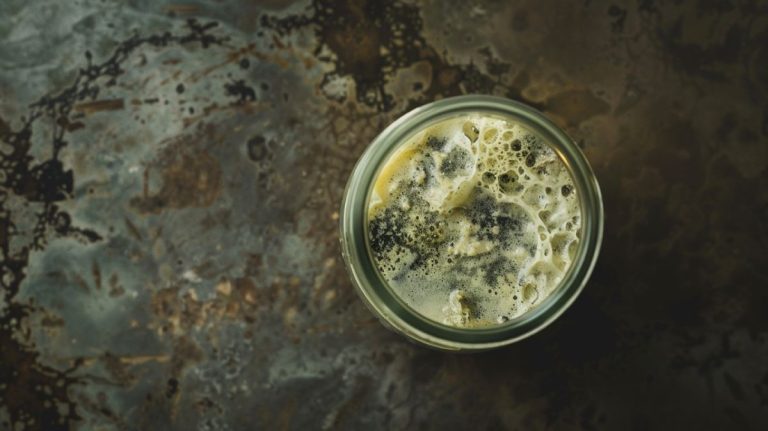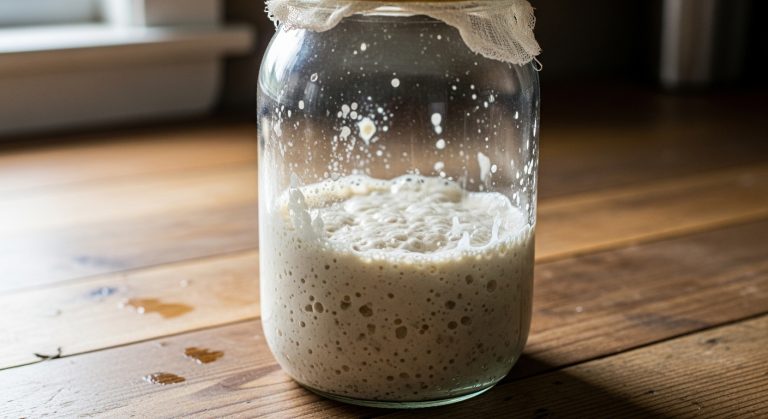Poolish Vs Sourdough Starter: A Battle of Secret Weapons in Bread Baking
In bread baking, two secret weapons can elevate any loaf’s flavor, texture, and aroma: poolish and sourdough starter.
Poolish is a type of pre-ferment made from flour, water, and a small amount of yeast. Its purpose is to develop flavor and increase the fermentation activity in the dough, resulting in a lighter, more flavorful loaf.
Sourdough starter, on the other hand, is a mixture of flour and water that is fermented by naturally occurring wild yeast and bacteria. It gives the bread a distinct sour flavor and chewy texture prized by many bakers. While creating and maintaining a sourdough starter takes longer, the payoff for the patient baker is well worth it.
In terms of which is better for bread baking, both have their merits. Poolish can produce an excellent loaf with little preparation time or fuss, while the flavor complexity of a sourdough starter is hard to rival. Ultimately, the choice between the two is largely a matter of personal preference and what kind of bread you want to bake.
Let’s explore the differences between poolish and sourdough starters and help you decide which one to use for your next baking project.
Poolish
The word “poolish” originated from the Polish word for “Polish” as this method was first developed in Poland by Baron Zang in the 1800s.
Poolish, a French bread-making technique, has become popular among bakers and bread enthusiasts. It is a type of pre-ferment, meaning it is made ahead of time and added to the dough during final mixing.
Poolish is beautiful in its simplicity and versatility. In this dough starter, flour, water, and just a pinch of commercial yeast are combined and fermented for 8 to 12 hours.

During this time, the sponge undergoes a magical transformation, collapsing and swelling until it becomes a soft and spongy texture perfect for making bread. Poolish has a 100% hydration level, so we’re adding the same flour as water.
It sounds like making a sourdough starter, and there are many similarities.
But they are not the same.
A poolish isn’t like a sourdough starter, which ferments much longer. It adds flavor to your dough and speeds up fermentation. Your loaf will be lighter, airier, and tastier.
Sourdough Starter
Sourdough is bread made with wild yeast and bacteria. These naturally occurring microorganisms feed on flour starches, producing lactic acid, carbon dioxide, and alcohol, giving sourdough bread its unique flavor of complexity, tanginess, chewy texture, and aroma.
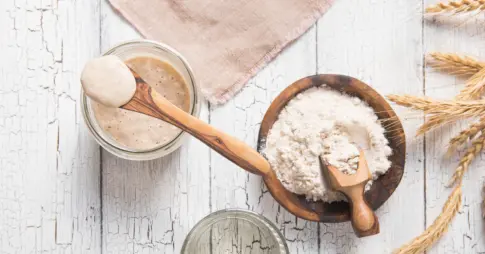
As the baker needs to continually feed the mixture with flour and water over several days, a sourdough starter takes longer than a poolish starter.
As soon as your sourdough starter gets bubbly and active, you can use it to make bread. With its long fermentation process, the dough develops a depth of flavor that cannot be achieved with just plain flour and water, resulting in a delicious loaf.
As a bonus, bakers benefit from sourdough starter’s ability to preserve bread’s freshness. It’s been used for centuries and is a hallmark of European bread.
Comparison of Poolish and Sourdough Starter
Poolish and sourdough starters both use fermentation to leaven bread. Their usage, flavor profile, nutritional benefits, preparation time, etc., are all different.
It’ll help bakers understand the strengths and weaknesses of sourdough and poolish starters and make informed decisions when choosing a leavening agent for their bread recipes. Let’s take a closer look at the two processes.

Fermentation Time
Both poolish and sourdough can be used to leaven your bread, but the fermentation time makes all the difference in how your bread turns out. It’s a key factor in making dough and affects the taste and texture of your bread.
Poolish and sourdough starters have different fermentation times. Poolish only takes a few hours to ferment, which gives your bread a mild yeast flavor and a more airy texture. It’s perfect for recipes that don’t require much preparation time.
On the other hand, sourdough starter takes several days to ferment with a regular feeding schedule, giving it that tangy flavor and chewy texture. It’s made from flour and water and relies on natural yeast and bacteria to ferment and grow, creating a rich and complex flavor profile that is hard to match.
Leavening Agents
Let’s talk about the leavening agents that make bread so tasty. Two popular options are poolish and sourdough starters.
These agents are crucial for creating the right texture, structure, and flavor in your bread. But what’s the difference between them? Commercial yeast is what we use in poolish starter, while sourdough starter contains wild yeasts and bacteria that give bread its unique taste.
Poolish yeast is fast and effective but doesn’t have the complex flavor of sourdough bread. However, sourdough yeast creates a particular taste that’s hard to duplicate. Plus, the bacteria in sourdough starters make bread last longer.
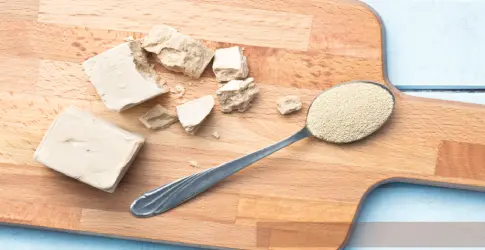
Now, let’s talk about yeast. In a poolish starter, commercial yeast is added to the flour and water without any bacteria. This makes the bread taste milder than sourdough bread. But, poolish makes bread soft and helps it last longer too. The fermentation process in poolish helps break down the flour into sugar for the yeast to feed on.
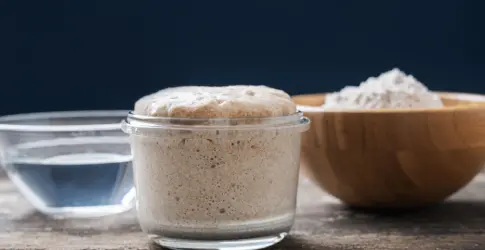
The sourdough starter uses yeast and bacteria to ferment the dough. Sour bread’s unique sourness comes from acid-producing bacteria. This yeast and bacteria combo also gives it a chewy texture and longer shelf life than Poolish. However, sourdough starter needs more maintenance and feeding than poolish.
Hydration
The hydration level of bread dough plays a significant role in determining the texture and flavor of the final product, with a higher hydration level resulting in a moister and more open crumb structure.
The hydration percentage of poolish is fixed at 100%, which means the dough will be more liquid and less stable. On the other hand, sourdough starters can have a hydration level ranging from 60% to 100%, allowing bakers to adjust the dough’s consistency according to their preference and the type of bread they want to make.
To give a better idea of how hydration affects the dough, here are some key points to consider:
• A higher hydration level results in a more extensible dough that is easier to shape but requires more time for proofing.
• A lower hydration level results in a stiffer dough that is harder to shape but requires less time for proofing.
• The hydration level also affects the flavor of the bread. A higher hydration level leads to a softer and more open crumb, resulting in a more complex flavor profile. A lower hydration level leads to a denser crumb, resulting in a simpler flavor profile.
Flavor Profiles
Using leavening agents like poolish or sourdough starters can give your bread a delicious flavor. If you want a mild but still yummy flavor, go for poolish.
But sourdough is the way to go if you’re after a more complex and tangy taste. This is because sourdough’s organic acid content gives it that unique taste.
Choosing the right leavening agent is important for meeting your customers’ preferences. A sourdough starter is great if you want a consistent flavor, and it’s easier to reuse it once you have it established.
On the other hand, poolish can be a bit trickier because the fermentation process can be affected by things like temperature and humidity. But don’t worry. You can experiment with different flours, fermentation times, and temps to get the perfect flavor for your bread.
So, whether you go with poolish or sourdough really depends on what you’re trying to achieve with your bread.
Nutritional Benefits
Leavening agents for bread baking matter more than just flavor. Their nutritional content is also important. The fermentation process used to create bread also affects its nutritional content.
Sourdough bread contains higher levels of minerals and vitamins due to the extensive fermentation period, which helps break down the starches in the flour and make them more digestible.
Additionally, sourdough has a lower glycemic index than other types of bread because it is fermented for so long. This means it takes longer to raise your blood sugar levels after eating sourdough bread than others.
Poolish also has some nutritional benefits, as the fermentation process helps to break down some of the starches and proteins in the flour.
Sourdough starter has more beneficial bacteria than poolish, so it can be a good option if you’re looking for some extra probiotic benefits. But, also, you can turn your poolish into something nutritionally beneficial and tasty with the addition of seeds, nuts, or other grains.
Bread Characteristics
Poolish and sourdough starters are two leavening agents with distinct characteristics. Bread made with poolish has a soft, open crumb, a slightly sweet flavor, and a thinner, crispier crust, ideal for sandwiches or toast.

On the other hand, bread made with sourdough starter has a nutty, tangy flavor, a chewy texture, and a thick, rustic crust. Its natural leavening process creates a complex taste that you can’t replicate with commercial yeast.
What sets these two apart is their preparation and maintenance. Poolish is made by mixing equal parts flour and water with a small amount of commercial yeast and letting it ferment overnight. Meanwhile, sourdough starter involves a mixture of flour and water that has to be fed with equal parts flour and water every day until it’s mature enough for use.
Knowing the differences between these leavening agents can help you achieve the perfect bread texture, flavor, and aroma.
Preparation and Maintenance
To make delicious bread, you must prepare and maintain your leavening agents. Two popular ones are poolish and sourdough starters, each with its unique way of prepping and maintaining.
Poolish is made fresh before each baking sesh, while sourdough starter needs regular feeding and care to keep it alive. To make a poolish, mix flour, water, and yeast, and let it sit for several hours until it’s bubbly and slightly sour, which means the yeast is active.
Use fresh ingredients and keep your mix at a consistent temperature.
Mix flour and water for sourdough starter, and let it ferment for several days. This creates a bunch of wild yeasts and bacteria that give your bread its unique taste and texture.
To keep your starter alive, you gotta regularly discard a portion and add fresh flour and water. Keep the temperature consistent and feed it more in hotter temps.
Ease of Use
Poolish is the perfect method for beginners. Using a commercial yeast strain, poolish is consistent and active, resulting in fewer potential issues for inexperienced bakers.
Compared to sourdough starters, the poolish method requires less skill and experience, making it more accessible for beginners. While sourdough produces flavorful bread, it can be challenging to work with: the starter’s activity level can vary, and many factors impact the fermentation process.
Plus, it takes more experience to know when the fermentation is complete, so the dough doesn’t over- or underproof. In brief, if you’re willing to invest more time and have some experience, you should go for a sourdough starter; in contrast, poolish is easier and yields excellent results.
Though sourdough is often considered an old-fashioned baking method, it has become trendy again thanks to its tangy flavor and potential health benefits. Sourdough bread has a lower glycemic index than other bread types, which may help regulate blood sugar levels and lower the risk of diabetes.
So, even though poolish is simpler, it’s worth considering sourdough too.
Choosing Between Poolish and Sourdough Starter
For bread baking, consider certain factors before choosing poolish or sourdough starters. They include the bread’s desired flavor, aroma, fermentation time, and recipe.
A baker’s preference and the desired outcome can determine the use of poolish and sourdough starters in bread recipes. This and the baker’s preference and experience will determine which starter to use.
Consideration Factors
Time Constraints: If you have limited time, go for Poolish, which can be prepared and used within hours.
Flavor Profile: Want a complex and tangy taste? A sourdough starter is the way to go.
Rise Time: The rise time for sourdough is longer than poolish, but it can produce a more flavorful and textured bread.
Maintenance and Feedings: Maintaining and feeding a sourdough starter requires more effort than preparing poolish.
Application in Bread Recipes
Applying poolish and sourdough starters in bread recipes can significantly impact the texture and flavor profile of various types of bread.
Poolish is a pre-ferment that is made by combining equal parts flour and water with a small amount of yeast and allowed to ferment for several hours. The resulting mixture is then added to the final dough, enhancing its flavor and extensibility.
Sourdough starter, on the other hand, is made by combining flour and water and allowing natural yeasts and bacteria to ferment the mixture over several days. This process creates a unique flavor profile, improves digestibility, and provides natural leavening for the bread.
When incorporating poolish or sourdough starters into bread recipes, it is important to consider the bread type and the desired outcome. Here are three ways in which poolish and sourdough starters can be used to enhance various types of bread:
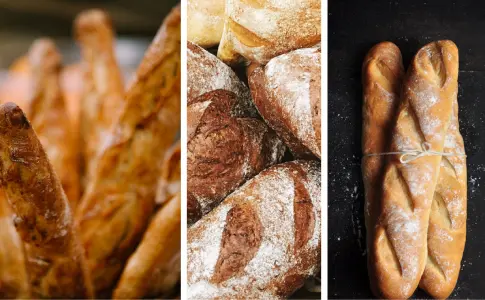
1. For artisan bread: Sourdough starter is the perfect choice for artisan bread, as it adds a unique flavor and texture to the bread. However, poolish can also be used, depending on the desired outcome.
2. For pizza dough: Poolish is ideal for pizza dough, as it enhances flavor and extensibility, allowing for a thin, crispy crust. A sourdough starter can make various bread, such as baguettes, focaccia, pizza dough, and rustic loaves.
3. For sandwich bread: Poolish can enhance the flavor and texture of sandwich bread. In contrast, sourdough starters can improve the bread’s digestibility and provide natural leavening.
4. For brioche: While both poolish and sourdough starters can make brioche, poolish is often preferred as it yields a more delicate texture. Poolish also produces a lighter crumb than sourdough bread’s denser crumb.
Poolish is best for making sweeter, enriched bread, such as brioche and panettone. While sourdough starter can be used, the resulting bread may not have the desired sweetness.
Choosing between Poolish and sourdough starters ultimately depends on the desired outcome and the baker’s preference.
Benefits of Using Poolish for Fluffy, Tastier Bread
1. More flavor: Extend your fermentation time with a poolish for a more complex and delicious bread taste.
2. Better texture: A poolish improves the dough structure, making your bread lighter and airier. Perfect for sandwich bread or baguettes.
3. Softer crumb: Keep that moisture in your bread with a poolish for a softer and tender crumb. No more dry bread!
Benefits of Using Sourdough Starter for Nutritional Bread
1. Natural leavening: Get rid of those chemical leaveners and rely on a sourdough starter instead! It will provide your dough with a natural lift and a fantastic flavor.
2. Improved digestibility: Sourdough starter contains beneficial bacteria that help break down the gluten in bread, making it easier to digest.
3. Rich nutrient profile: A sourdough starter helps retain essential vitamins and minerals lost during baking, resulting in a more nutritious loaf of bread overall.
Is sourdough starter a good substitute for poolish?
Yes, you can substitute sourdough starter for poolish in bread making. However, it is important to note that the substitution may affect the final texture and taste of the bread.
Poolish is a pre-ferment made with flour, water, and yeast that adds flavor and improves the dough’s rise. On the other hand, a sourdough starter is made with flour and water and contains natural wild yeast, which adds flavor and improves the dough’s rise.
However, the sourdough starter has a more distinct sour taste than poolish. Therefore, substituting sourdough starter for poolish may result in a tangier and more sour bread.
Additionally, the sourdough starter requires a longer fermentation time than poolish, so adjusting the fermentation time and technique is necessary when substituting.
What’s the shelf life of Poolish?
Poolish, a pre-ferment used in bread making, can last up to 3 days in the fridge. But, it is important to understand that the freshness and effectiveness of the poolish will decrease over time.
The longer it sits in the fridge, the less activity it will have, resulting in less rise and flavor in the final bread. To maximize the longevity of poolish, store it in an airtight container and use it as soon as possible for the best results.
What is an alternative to sourdough starter?
There are several alternatives to sourdough starters, including commercial yeast and various pre-made bread mixes. Commercial yeast is a convenient option that can be easily incorporated into a bread recipe, and it typically results in a consistent rise and flavor.
Pre-made bread mixes can also offer convenience and consistency, although they may not have the same depth of flavor as sourdough.
Sourdough and poolish are the only two options available to bread makers today. Plenty of other starters, such as rye sour, biga, and levain, can be used in various recipes for unique flavor profiles.
Remember to check the recipe carefully before beginning, regardless of which starter you choose. Other options include using yogurt, kefir, or even beer to create a sourdough-like flavor and texture in bread.
Ultimately, the choice of an alternative will depend on the desired flavor profile and level of complexity in the baking process.
Become a Bread-Making Pro with Poolish and Sourdough Starter
Now that you have all the necessary information, it’s time to take your bread-making skills to the next level. With a poolish and sourdough starter, you can create a variety of delicious and healthy bread that will impress your friends and family.
Experiment with different recipes and techniques to find your perfect bread. Don’t forget that sourdough starter has amazing health benefits, making it a great choice for those who want to enjoy bread while still being mindful of their health.
One thing to keep in mind is that bread-making is a practice that requires patience and dedication. Don’t get discouraged if your first few loaves don’t turn out perfect, practice makes perfect, and with time and perseverance, you’ll soon be a bread-making pro.
So, stock up on your baking supplies, roll up your sleeves, and rise to new heights with your bread-making skills.

